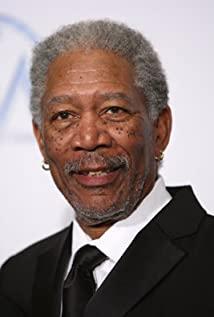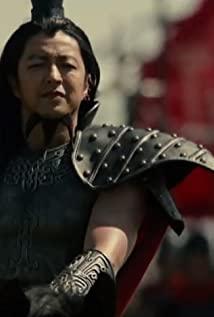In 2005, I inadvertently watched this "Diary of an Emperor Penguin" on CCTV-6 "A Date with a Good Movie". I thought it was the same animal program as "Man and Nature", but I realized it later. It is a documentary about the reproduction of the emperor penguin family, and it is also full of the director's careful observation and record. Later, at the opening ceremony of Model United Nations, we made use of the clips in the promotional video, savored it again, and made it a personal understanding and sharing.
Introduction: This
film records the story of the survival and reproduction of emperor penguins living on the Antarctic continent. The film shows how emperor penguins battle the harsh natural environment and their predators, and how to pour their love for the little penguins to complete their life extension journey.
Antarctic winters are bitter and cold, and penguins have very limited choices of living environment: one is the north, where there is a vast ocean, a relatively warm living environment, and sufficient food sources; the other is the south, which is cold all year round, covered with ice and snow, but the environment relatively stable. In order to protect newborn penguins from the dangers of sudden changes in climate, emperor penguins have to leave the comfortable north and embark on a dangerous journey of hundreds of kilometers to the cold south, where they lay their eggs and incubate them until the return of spring. earth. All this is for the reproduction of the penguin family.
The film shows the courage, struggle and love of a group of animals in the uninhabited Antarctic continent for thousands of years, which has a shocking power.
Awards:
2006 Oscar for Best Documentary Feature,
2005 NBR Award, Best Documentary Feature,
2006 French César Award, etc.
Directors:
French director Luc Jaquet has always been keen on the shooting of wildlife documentaries. Since his debut, he has participated in the shooting of more than ten documentaries on related subjects, and has won many praises in the industry. Luc has studied biology and has a good understanding of the wild and animal behavior and habits. The only problem is that he has never shot with a camera himself. After 10 days of training with a 35mm camera, Luc went to the Dumont Durville Science Centre at the French Antarctic Station when he turned 24. Because Luc was born in the mountains of eastern France, he learned to ski at the age of 3. He has long been accustomed to the cold climate of the polar regions. For 12 years, he has been shuttled between the Antarctic and the inland.
When referring to the original intention of shooting the film, he said that he hoped to dig a little-known story in the vast glaciers and snowfields, a true and contagious story. Emperor penguins had never seen humans before the first polar explorers arrived in Antarctica a century ago, and although a scientific research station was established in 1950, this large group of polar elves still feels extremely unfamiliar. Luc hopes to use the beautiful images of emperor penguins in the cold Antarctic and the epic fate of their species to tell a true story to human beings that can move the world.
The story of the emperor penguin begins with the director's 14-month lens.
Film Comments:
1. Clues:
The clues in this film are clear, I think there are 2 main clues. Among them, one is a time clue. According to the change of seasons, changes in Antarctic climate and weather guide the changes and development of the natural world. These include the peculiar polar day, polar night, and beautiful auroral phenomena of the little-known Antarctic world. The sun is also emphasized many times, echoing with nature. The other is a clue to the reproduction of the penguin family itself, which is a complete clue for the penguin couple to migrate, reproduce, hatch, raise offspring, and grow up until the new generation of little penguins. Through the alternate development and narration of these two clues, the whole film is complete, close, and full of interest and authenticity.
Clear clues and clear narrative, paired with an appropriately romantic French narration, make this 14-month film a stellar result.
2. Lenses and scenes:
The whole film has a clear and clear sense of lens, and completely and accurately captures the embarrassment and firmness of the emperor penguin family. The director team used aerial panorama, long shot, close shot, medium shot, close-up and other shots and scenes, which not only showed the huge size of the emperor penguin family, the neatness and unity of the migratory team, but also their cuteness, unity and strength. Character, and unwavering love. ,
The film completely captures the complete life scenes of emperor penguin migration, swimming, courtship and mating, hatching, predation, hunting encounter, growth of little penguins, etc., including underwater filming, which reflects the director team to overcome all kinds of difficulties and help us. A romantic diary showing the cute guys in black tuxedos.
3. Music and sound: A
good documentary and appropriate emotional music can also add a lot of color to the film and render the atmosphere. In this film, Amy interprets the beauty and holiness under the Antarctic ice and snow with her innocent and ethereal voice, sometimes showing a romantic atmosphere and sometimes a magnificent scene.
In terms of sound, the director team tried their best to capture every sound of the extremely low world, such as the cry of penguins, the sound of cold wind blowing, the sound of flapping wings, the sound of ice breaking, egg shell breaking, etc. . Show us the real silent and loving world of Antarctic penguins.
4. Main body of "character":
The whole film completely personifies the penguin, and uses the voices of a man, a woman and a child as dubbing, which vividly depicts the life of the emperor penguin. Not only let people see the naive side of penguins, but also let people see the warmth and deep feelings of penguins' families, and of course the cruelty of nature.
The director team recorded the story of the penguin family as a completely objective and observer. Watching eggshells being cracked on ice and watching little penguins being hunted, the film crew insisted on using the lens to record the choice of nature. That's it, without human intervention, which is rare. The anthropomorphic approach endows penguins with life and agility, with emotion, life and cognition.
Perhaps the mystery of nature lies in this, every species has innate motherhood, paternal love, and they will do anything for their babies. It is this great love that touches the hearts of viewers. Re-understand your own values and outlook on life. Under such difficult and difficult conditions, the penguin family has taught mankind a significant lesson. I think this is also the result of the consensus of the Oscar judges.
View more about March of the Penguins reviews











